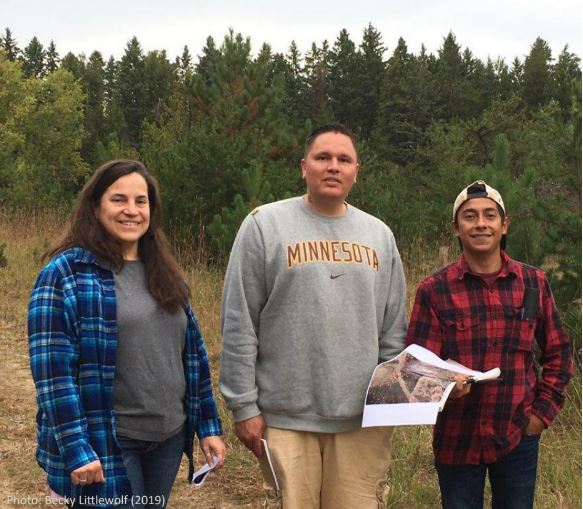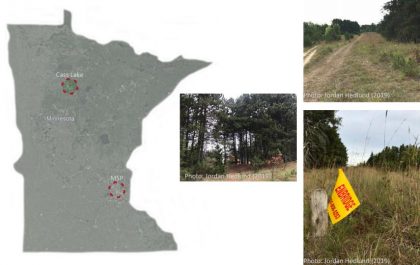Early interaction with nature has been proven to increase children's capacity for creativity, critical concentration skills, and relationship building.

Through a research assistantship with the Central Regional Sustainable Development Partnership (CRSDP) and the Center for Urban and Regional Affairs (CURA), Jordan Hedlund (Landscape Architecture) sought to harness these advantages by co-designing outdoor programmed space with Leech Lake Early Childhood Development. This project also received support from the Mary J. Page Community-University Partnerships Fund.
The Megwayaak project was a perfect fit for Hedlund, who designed playgrounds before pursuing his masters in landscape architecture. “The clients were hoping for a curriculum and a technique to incorporate indigenous education experiences, nature-based play, and nature-based design. My graduate advisor, Professor John Koepke, reached out to me about the project when he first heard about it because of my research interests and time spent as a construction manager for a playground company,” explained Hedlund.
Hedlund approached the project by reviewing research completed by another CRSDP and CURA research assistant, Jesse Austin (Public Health). Austin’s work, co-created with Leech Lake Early Childhood program directors and teachers last year, focused on the merits of getting children active at an early age, introducing them to the outdoors, and leveraging and adapting Leech Lake’s existing curriculum for outside spaces.
“Jesse’s research not only established a basis for why nature-based play is good for children but also created outdoor learning guides based on different aspects of childhood development and associated tasks for each one,” said Hedlund. “There were a total of 136 tasks within the learning guides that catered to the research she did on developmental learning—things like bringing children to an outdoor learning space to try and locate birds. My approach was to use the tasks to inform my design work.”
Using the research and curriculum developed last year, the project team asked Hedlund to design an integrated mulch path network through the woods surrounding the building. “We were really fortunate to have partnered with some great grad students through the University of Minnesota,” said Leech Lake Band of Ojibwe SNAP-Ed Coordinator Claire Chase. “Jordan’s project really helped enrich and prioritize our work here around culture, physical and mental health, and our relationship to the outdoors.”
In addition, the team designed three demonstration spaces with steppers as well as a wigwam building. They also prioritized finding a safe, affordable solution for poison ivy management. “We could not be more pleased with our experience collaborating with Jordan, the CRSDP, and CURA,” said Ojibwemowin Mentor Waase Paulson. “His project has provided us with a concrete plan to turn our vision of a place for our children to interact with nature and space for our community members to share their knowledge into a reality.”
At the end of the project, Hedlund was able to complete a full master plan, budget, and construction itinerary for Leech Lake Early Childhood Development. “I wanted to provide a guide that not only gave them a roadmap on the budgeting side of things, but that catered to their curriculum and their needs. My job as a landscape architect, as a designer, is to create something effective for my clients.”
Hedlund’s work on this project was further recognized by the Minnesota Chapter of the American Society of Landscape Architects when he was awarded the Women in Landscape Architecture Minnesota Diversity Scholarship in spring 2020.
This July, four million people in Cape Town, South Africa, may be without water, their pipes dry as the city succumbs to a devastating drought. Around the world, governments and their citizens are grappling with issues of water availability, cleanliness, and management.
Our planet’s changing climate will radically transform not only our landscapes but the industries that have developed around them. In her capstone, M.L.A. student Rachel Valenziano explores how to redevelop areas of the Louisiana coastline that are currently used by the oil and gas industry.
On November 24, 2016, the Colombian government and the Fuerzas Armadas Revolucionarias de Colombia (FARC) signed a peace accord after over 50 years of armed conflict. As the country tries to move forward Daniela Duque Quevedo and Danielle Jurichko, two students in the College of Design’s Master of Landscape Architecture program, are exploring how design and landscape architecture can help provide a space for healing.







